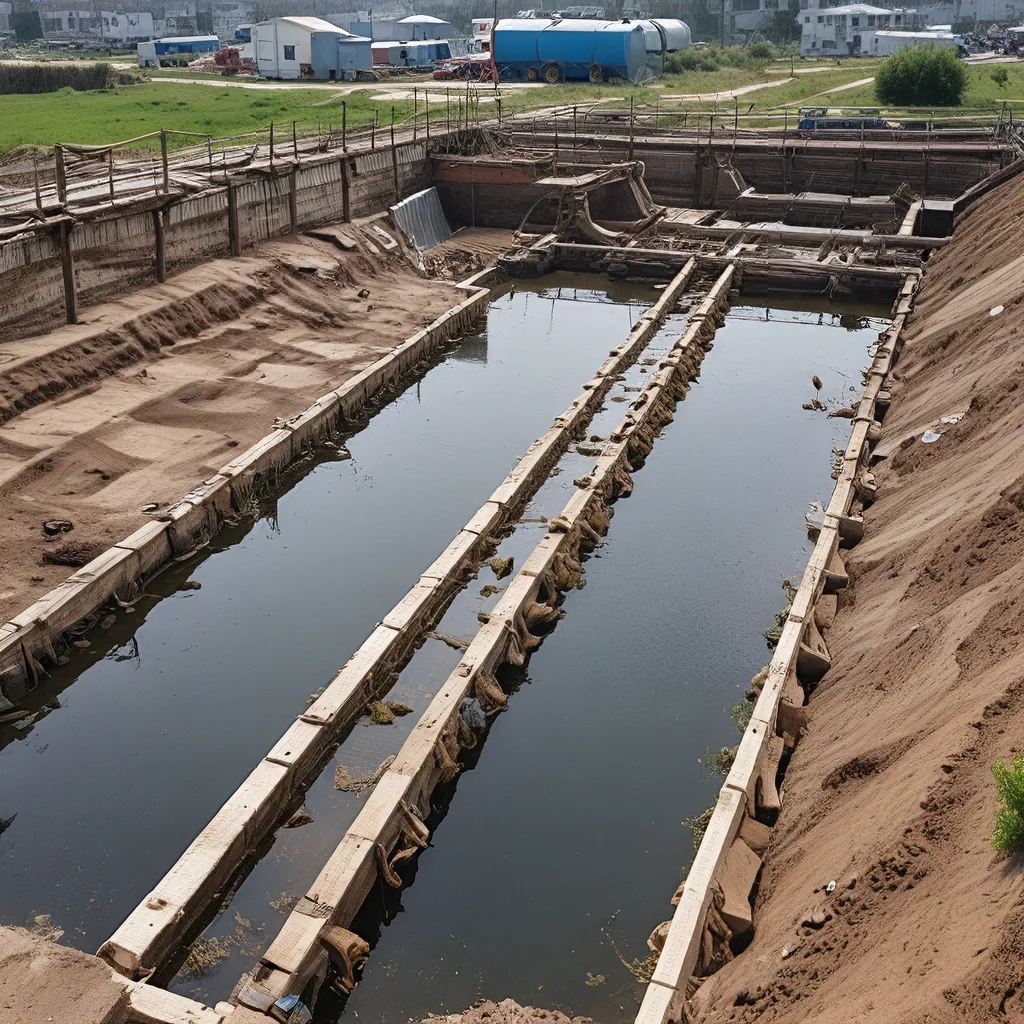
As someone who’s always been fascinated by the intersection of technology and the environment, I can’t help but be intrigued by the emerging trends in wastewater treatment. It’s a domain that’s ripe for innovation, and the rise of the sharing economy has opened up some fascinating new possibilities.
Rethinking Wastewater Treatment: From Centralized to Decentralized
For the longest time, the traditional approach to wastewater treatment has been highly centralized. Large, municipal-scale facilities would collect and process wastewater from entire communities, before discharging the treated effluent back into the environment. And while this system has served us well for decades, it’s become increasingly clear that it’s not the most efficient or sustainable model for the future.
One of the key challenges with the centralized approach is the massive infrastructure required to collect and transport wastewater over long distances. This not only comes with a hefty price tag, but it also consumes a significant amount of energy, further contributing to our environmental footprint. Moreover, these large, centralized facilities are often vulnerable to disruptions, whether it’s natural disasters, equipment failures, or even cyber attacks.
That’s where the concept of decentralized wastewater treatment comes in. The idea is to move away from the “one-size-fits-all” mentality and instead, embrace a more localized, modular approach. Instead of relying on a single, massive treatment plant, we could have a network of smaller, distributed facilities that can process wastewater closer to the source. This not only reduces the need for extensive collection infrastructure, but it also makes the system more resilient and adaptable to changing circumstances.
The Sharing Economy and Wastewater Treatment: A Match Made in Sustainability Heaven?
As I delved deeper into this topic, I couldn’t help but notice the intriguing parallels between the principles of the sharing economy and the emerging trends in wastewater treatment. The sharing economy, with its emphasis on collaborative consumption and asset utilization, has the potential to significantly transform the way we approach wastewater management.
Imagine a scenario where, instead of each community or municipality investing in its own wastewater treatment facility, they could tap into a network of shared, decentralized treatment plants. These plants could be owned and operated by specialized service providers, who would offer their expertise and infrastructure on a pay-per-use or subscription-based model. This would not only reduce the upfront capital costs for individual communities, but it would also allow for more efficient utilization of resources and better economies of scale.
Furthermore, the sharing economy approach could also foster greater innovation and collaboration within the wastewater treatment industry. By encouraging the development of modular, plug-and-play treatment solutions, we could make it easier for communities to adopt the latest technologies and adapt to changing needs. And by incentivizing service providers to maximize the utilization of their assets, we could drive continuous improvements in efficiency and sustainability.
Overcoming the Challenges: Navigating the Transition to Decentralized, Shared Wastewater Treatment
Of course, transitioning to a decentralized, shared model of wastewater treatment is not without its challenges. One of the primary hurdles is the need for robust regulatory frameworks and standards to ensure the quality and safety of the treated effluent. After all, we can’t afford to compromise on public health or environmental protection, even as we explore these innovative service models.
Another key consideration is the need for strong collaboration and coordination between the various stakeholders involved, including local governments, service providers, and end-users. Developing the right incentive structures, service-level agreements, and data-sharing protocols will be crucial to ensuring the smooth and equitable functioning of this new wastewater treatment ecosystem.
And let’s not forget the human factor – the need to educate and engage the public on the benefits of decentralized, shared wastewater treatment. It’s important to ensure that communities understand the value proposition and are willing to embrace these new service models, rather than clinging to the familiar but outdated centralized approach.
The Future of Wastewater Treatment: A Glimpse into the Possibilities
Despite the challenges, I can’t help but feel excited about the potential of this emerging paradigm shift in wastewater treatment. Imagine a future where communities across the globe have access to cutting-edge, decentralized treatment solutions that are tailored to their specific needs and powered by the principles of the sharing economy.
Perhaps we’ll see small, modular treatment plants that can be easily deployed in remote or underserved areas, providing safe and sustainable sanitation solutions to those who previously lacked access. Or maybe we’ll witness the rise of dynamic, on-demand wastewater treatment services that can quickly adapt to fluctuations in demand or the emergence of new pollutants.
And who knows, maybe we’ll even see the development of integrated, cross-industry sharing platforms that facilitate the exchange of treated wastewater, nutrients, and other valuable byproducts between different users – creating a truly circular, symbiotic ecosystem.
The possibilities are truly endless, and the potential impact on global health, environmental sustainability, and economic development is nothing short of transformative. As we continue to explore these innovative service models, I can’t help but feel a sense of cautious optimism and a renewed commitment to driving positive change in the world of wastewater treatment.
After all, if we can harness the power of the sharing economy to revolutionize the way we manage one of our most precious resources, just imagine what we can achieve in other domains. The future is ours to shape, and I for one, can’t wait to see where this journey takes us.